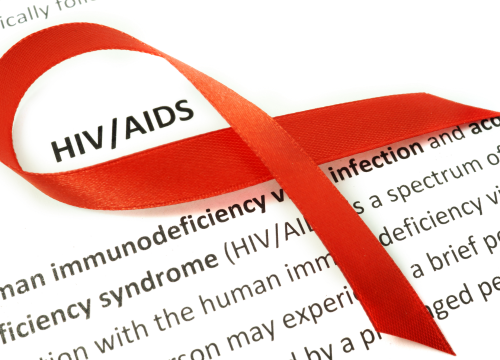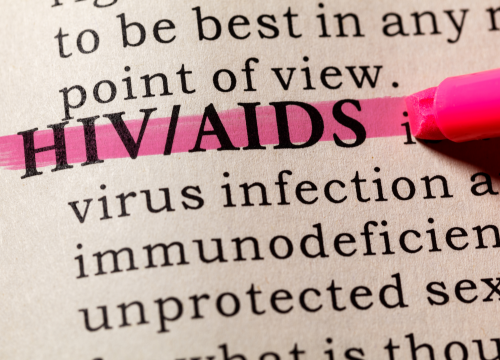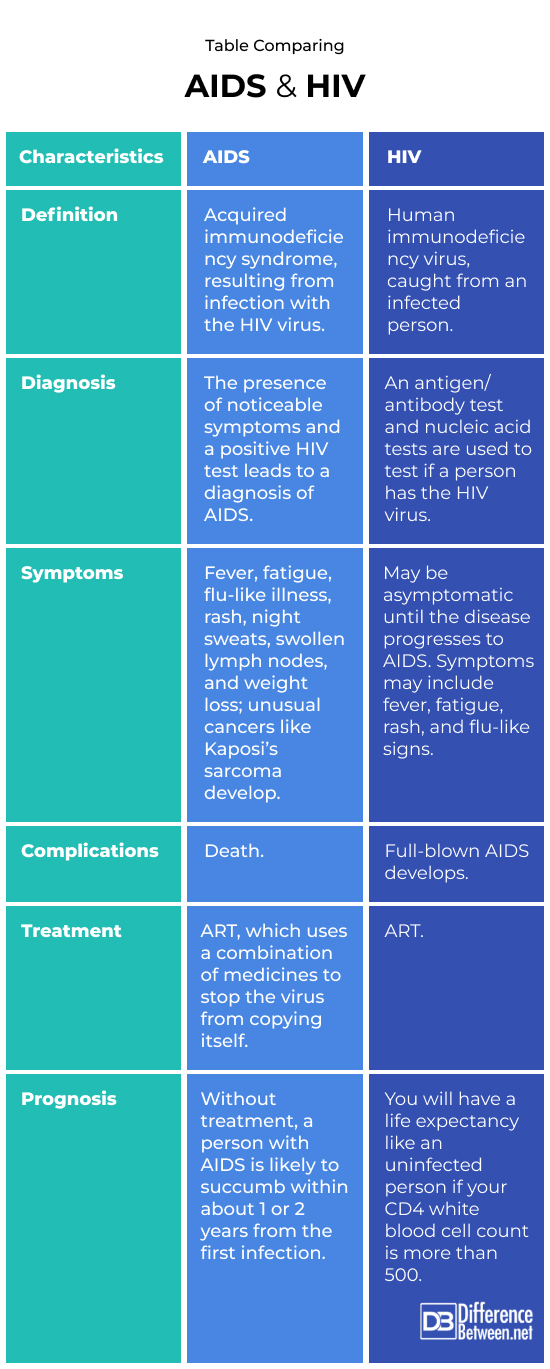Difference Between AIDS and HIV
AIDS is acquired immunodeficiency syndrome; it is a medical condition where the person’s immune system is so severely compromised that they are no longer able to easily fight off infections and, consequently, become ill often.HIV is the human immunodeficiency virus which causes AIDS.
HIV is transmitted through body fluids from an infected person. This can take the form of blood transfusions, sharing needles, and sexual activity. Eventually, HIV can lead to the person having AIDS. Full-blown AIDS results in the person developing rare conditions like fungal infections and rare forms of cancer. Eventually, the person can die from AIDS as their body can no longer fight off infection.
In short, AIDS is the illness directly resulting from the HIV virus. AIDS may not manifest right away, especially nowadays since there are medications that help inhibit the activity of the HIV virus.

What is AIDS?
Definition:
AIDS is an acquired immune condition where the person has a weakened immune response due to being infected with the HIV virus. People with AIDS present with rare cancers that are not typically seen in people who have a healthy immune system. AIDS patients are often ill since they catch opportunistic infections that they struggle to recover from because they have a weak and impaired immune response.
Symptoms and treatment:
The initial symptoms of AIDS are often described as flu-like, as they entail such signs as weakness, general fatigue, swollen lymph glands, and fever. The person may also develop sores in the mouth and suffer from diarrhea. However, over time, the person becomes sick more often and develops rare illnesses such as Kaposi’s sarcoma. Kaposi’s sarcoma can be seen in the presence of lesions that develop on the skin. These lesions are actually tumors that invade the mucous membranes.
The individual with AIDS also loses a tremendous amount of weight and starts to waste away. In the 1980s, when AIDS first appeared, little could be done for patients, and death happened quite soon after diagnosis. Today, there are more options available to help individuals who have AIDS, although many still eventually die from the condition. Treatment consists of antiretroviral therapy (ART), which helps stop viral replication.

What is HIV?
Definition:
HIV is classified as one of the retroviruses. HIV is the virus that can develop into AIDS. The virus is actually made of a single-strand of RNA; it uses the cells of the host to further replicate itself. HIV does this by first entering the host cell, then converting the viral RNA into DNA and then using the host cell to make more copies. The HIV virus infects a particular type of white blood cell known as a CD4 cell. These are the cells that are destroyed in the process of infection with the virus, resulting in an ever-increasingly low CD4 count in patients as the disease progresses.
Symptoms and treatment:
A person who is infected with the HIV virus may be asymptomatic at first, not realizing they are infected. Initial symptoms may start to develop as the HIV virus replicates and develops into AIDS. Signs include feeling very tired, having a fever, and feeling like you have the flu. Once diagnosed, a person with HIV can be given antiretroviral medicines that work by inhibiting the viral replication machinery. Antiretroviral therapy usually involves a mix of medicines because the virus can adapt and begin to resist certain of the medications.
Difference between AIDS and HIV?
Definition
AIDS is acquired immunodeficiency syndrome due to HIV. HIV is the human immunodeficiency virus.
Diagnosis
A diagnosis of AIDS can be made based on the presence of noticeable symptoms and a positive HIV test. A diagnosis of HIV is based on a positive nucleic acid and antigen/antibody HIV test.
Symptoms
Signs of AIDS include fever, fatigue, flu-like illness, rash, night sweats, swollen lymph nodes, and weight loss; unusual cancers like Kaposi’s sarcoma develop. People with HIV infection may initially not have any symptoms, but if there are, they are usually flu-like symptoms.
Complications
AIDS leads to death eventually, as there is no cure. HIV results in AIDS.
Treatment
AIDS is treated with antiretroviral therapy, which uses a combination of medicines to stop the virus from copying itself. HIV is also treated with ART.
Prognosis
Without treatment, a person with AIDS is likely to succumb within about 1 or 2 years from the first infection. In the case of HIV, you will have a life expectancy like an uninfected person provided your CD4 white blood cell count remains above 500.
Table comparing AIDS and HIV

Summary of AIDS Vs. HIV
- AIDS is an immune deficiency disorder where patients catch opportunistic infections and develop rare cancers as the illness progresses.
- HIV is the virus that causes AIDS to develop.
- HIV attacks the CD4 cells of the immune system making you vulnerable to infections.
FAQ
How is HIV different from AIDS?
HIV is the virus, while AIDS is the disease caused by the HIV virus.
Can a person have AIDS without HIV?
No, AIDS is a direct result of HIV infection.
Which is more serious HIV or AIDS?
AIDS is the disease caused by the virus and is, thus, more serious than HIV.
When does HIV turn into AIDS?
It can take about 10 years for AIDS to develop from HIV infection.
Can HIV be cured?
No, HIV cannot be cured.
What treatments are available for HIV and AIDS?
Various antiretroviral medications are used to help inhibit the virus.
Can HIV be prevented? If so, how?
Yes, avoiding risky behavior like sharing needles and not engaging in unprotected sex with many partners can reduce your chances of infection.
Is HIV/AIDS still a concern today?
Yes, HIV/AIDS is still a concern today with new cases being diagnosed all the time.
- Difference Between Constipation and Bowel Obstruction - April 3, 2024
- Difference Between Constipation and Diarrhea - March 30, 2024
- Difference Between Cellulite and Stretch Marks - March 25, 2024
Search DifferenceBetween.net :
5 Comments
Trackbacks
- Difference Between Abbreviation and Acronym | Difference Between | Abbreviation vs Acronym
- Difference Between HIV and HPV | Difference Between | HIV vs HPV
Leave a Response
References :
[0]Cachay, Edward R. “Human Immunodeficiency Virus (HIV) Infection”. Merckmanuals. Merck & Co., 2020, https://www.msdmanuals.com/professional/infectious-diseases/human-immunodeficiency-virus-hiv/human-immunodeficiency-virus-hiv-infection
[1]Levine, A. M., and A. Tulpule. "Clinical aspects and management of AIDS-related Kaposi's sarcoma." European Journal of Cancer 37.10 (2001): 1288-1295.
[2]National Institutes of Health. “FDA-Approved HIV Medicines”. NIH, 2023, https://hivinfo.nih.gov/understanding-hiv/fact-sheets/fda-approved-hiv-medicines
[3]Image credit: https://www.canva.com/photos/MADGBYsnu8U-definition-of-hiv-aids/
[4]Image credit: https://www.canva.com/photos/MADAIpUaAfM-paper-with-hiv-aids-and-red-ribbon/

i not like it
PrEP (pre-exposure prophylaxis) and PEP (post-exposure prophylaxis) should be mentioned in this article in some form or another.
PrEP works by disabling the spread of the virus before it can take hold. This is accomplished by taking PrEP for at least three weeks before potential exposure. PrEP must be taken consistently.
PEP works, if taken within 72 hours of infection, by preventing the virus from taking hold within the person’s bloodstream, in a similar fashion to PrEP, except it is taken “after” exposure.
This is very important information that should be included in an article like this. Please add this! In some cases HIV infection was prevented in 90% of those who took PrEP. This is life saving information.
Edit: PrEP must be taken for at least for SEVEN DAYS to make it effectual. I mistakenly wrote “three weeks.”
I have read “three weeks” elsewhere (perhaps for optimal protection?) Either case, my mistake.